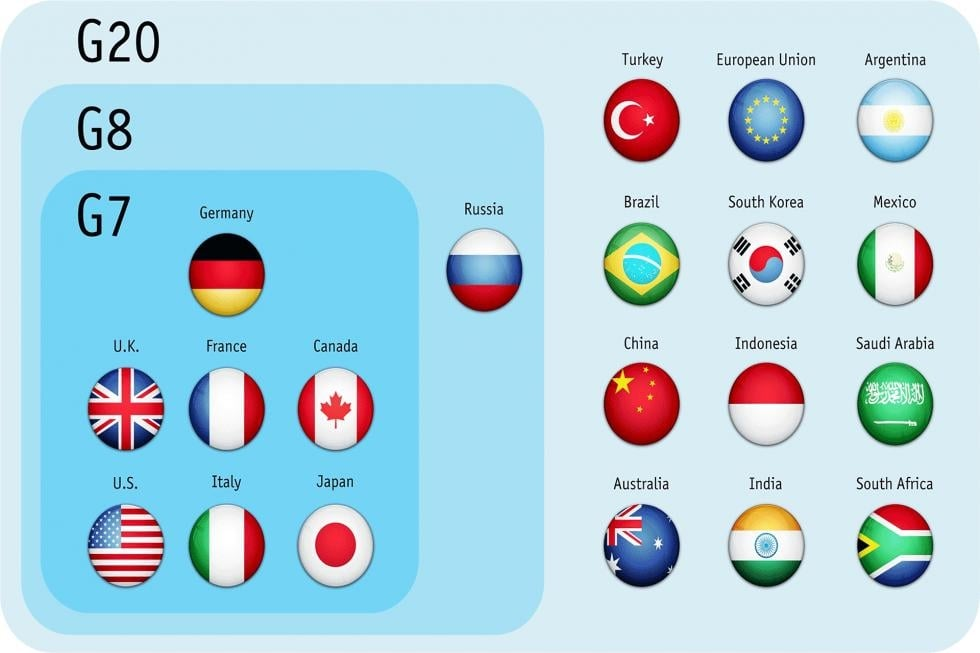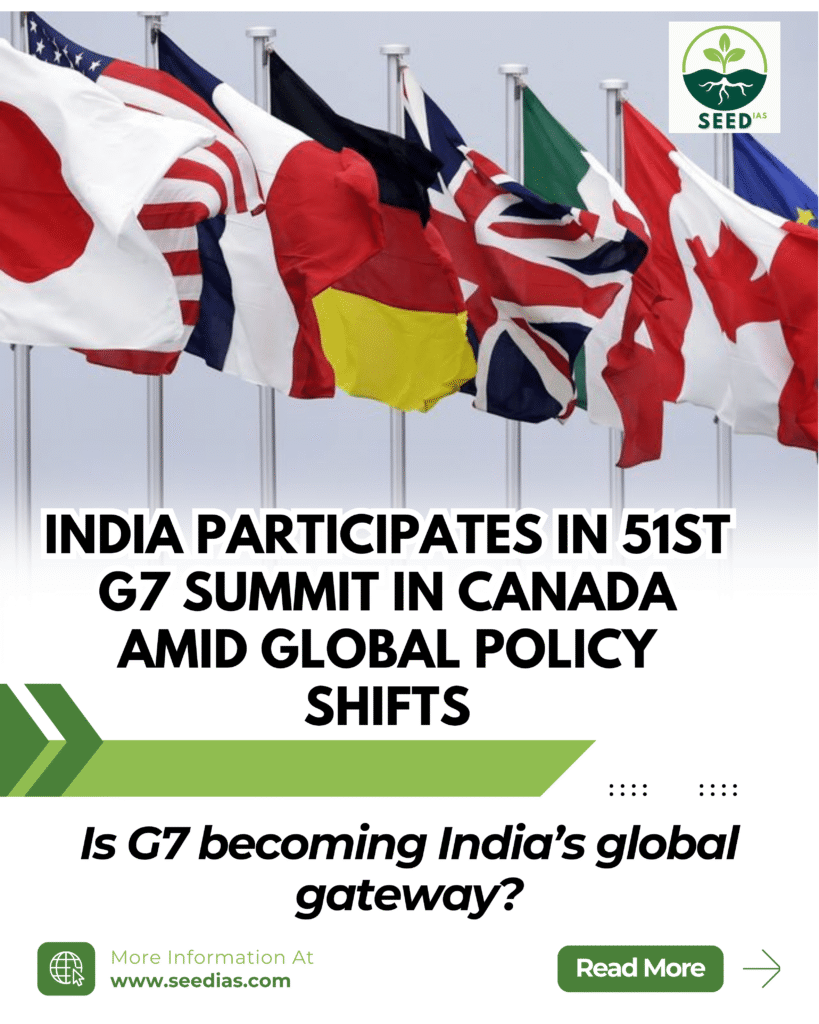Why in NEWS
India’s Prime Minister attended the 51st G7 Summit held at Kananaskis, Canada, marking India’s 12th appearance as an outreach country. The summit witnessed the first-ever participation of the European Commission President.
Key Concepts and Terms
| Term | Explanation |
|---|---|
| G7 | Group of Seven – informal forum of seven advanced economies (USA, UK, France, Germany, Italy, Canada, Japan). |
| Outreach Country | A non-G7 country invited to engage in discussions, often reflecting shared interests on global issues. |
| Kananaskis Wildfire Charter | G7 pact for wildfire response, local action, and forest conservation aligned with the 2030 deforestation targets. |
| Critical Minerals Action Plan | G7 strategy to diversify sources, promote innovation, and reduce dependency on a few countries for rare minerals. |
| RISE Partnership | A World Bank-led initiative for strengthening resilient and inclusive supply chains. |
| Transnational Repression (TNR) | Tactics used by governments to silence dissenters across borders through intimidation or violence. |
News Details
- India’s consistent invite reflects global trust in its role as a key strategic and economic partner.
- The Kananaskis Wildfire Charter emphasizes local, science-based and nature-centric wildfire response, echoing commitments from the Glasgow Declaration.
- The Critical Minerals Action Plan aims at enhancing global supply chains for minerals crucial to clean energy and technology (like lithium, cobalt).
- G7 reaffirmed support for the RISE Partnership to create supply chains less vulnerable to global shocks.
- The group condemned Transnational Repression, signalling support for democratic values and freedoms.
- Migrant Smuggling Prevention was a key focus, with a new action plan under the G7 Coalition.
What is G7?
| Feature | Details |
|---|---|
| Formation | Originated in 1975 as G6; became G7 in 1976 with Canada; became G8 in 1997 with Russia, reverted in 2014. |
| Members | USA, UK, France, Germany, Italy, Canada, Japan. |
| Other Participants | European Union, and invited institutions like IMF, World Bank, UN. |
| Decision-making | Consensus-based, no legal binding power or treaty framework. |
| Presidency | Rotates annually among members. |
| Economic Weight | Represents ~40% of global GDP, ~30% energy demand, and ~25% CO₂ emissions. |

In a Nutshell (Mnemonic: G7 WARMIC)
Global wildfire charter
7 key members
World Bank’s RISE backing
Action Plan for migrant smuggling
Repression (TNR) condemned
Minerals plan to diversify supply
India joins as outreach nation
Climate, energy, and supply chain security emphasized
Prelims Practice Questions
- Which of the following countries is not a member of the G7?
A. Canada
B. Russia
C. Germany
D. Japan - What is the aim of the G7 Critical Minerals Action Plan?
A. To ban mineral exports from China
B. To promote use of synthetic minerals
C. To diversify sources and boost investment in critical minerals
D. To create a unified G7 mining consortium - What does Transnational Repression (TNR) refer to?
A. Economic sanctions between countries
B. Foreign governments using intimidation against individuals abroad
C. Climate policies forced on developing countries
D. Espionage through cyber-attacks
Mains Practice Questions
- Discuss the role of India’s participation in G7 summits in shaping its global diplomatic and economic engagements. (GS II – International Relations)
- Evaluate the significance of G7’s commitments such as the Critical Minerals Action Plan and RISE Partnership in ensuring global supply chain resilience. (GS III – Economy and Environment)
Answers to Prelims Questions
| Q.No | Answer | Explanation |
|---|---|---|
| 1 | B | Russia was a G8 member but was expelled in 2014. |
| 2 | C | The Action Plan aims to diversify production and investment in critical minerals. |
| 3 | B | TNR refers to harassment or coercion by states across borders. |
















